An effective SIEM tool quickly digests massive volumes of data, searching out only relevant events that warrant further examination. It enables security teams to address high-risk threats immediately while offloading lower risk incidents to automated response processes.
Staffing security operations teams remains a challenge for enterprises. How can you maximize the return on your SIEM investment?
What is Security information and event management (SIEM)?
SIEM systems provide enterprise security professionals with an effective tool that gives them insight into both their current IT environment and past events. SIEM can assist them in quickly detecting breaches while giving IT teams all of the information needed to respond swiftly.
This tool achieves this by collecting and analyzing log data from servers, end-user devices and other network equipment. Once collected, this data is compared with threats in order to highlight any deviations from this baseline that could indicate potential issues and alert you of them immediately.
These tools may be purchased and managed by your IT team, or alternatively you may opt to work with an MSSP who will handle all technical details associated with collecting, storing, parsing and analyzing the information collected. An MSSP can also assist in setting goals and developing security functionality tailored specifically for you ensuring you have access to tools suited to meet those specific needs.
SIEM tools offer advanced technologies like user and entity behavior analytics (UBA/UEBA), which aim to detect internal threats by recognizing suspicious activities from users. These solutions are sometimes known as SIEM 2.0 solutions and provide invaluable insight into privileged user activity.
Why is SIEM important?
SIEM allows security teams to search and review threats from multiple sources in one convenient dashboard, providing visibility on any possible breaches as they occur across different sources. SIEM helps surface Indicators of Compromise (IoCs) which point towards potential root causes of breaches while correlating and analyzing data to detect multiple attack vectors and stages; helping you prioritize response efforts against attacks faster.
The best SIEM tools integrate across platforms, vendor products and both on-prem and cloud infrastructure, applications and services for an accurate picture of business risk. Their event correlation capability reduces mean time to detection (MTTD) and mean time to resolution (MTTR), saving IT security teams valuable time in detection/resolution processes. They also feature advanced features like UEBA/SOAR to reduce operational friction during incident response processes.
Before selecting a SIEM solution, it is crucial that you establish specific security use cases to guide deployment and functionality requirements. This will ensure you select the ideal tool to reach your desired goal and plan your implementation appropriately. It is also crucial to keep future growth and security maturity in mind as part of this planning.
How Does SIEM Work?
SIEM tools operate by collecting logs and data from various security and IT devices, then analyzing it to detect threats and alert IT teams about them. Furthermore, these tools help ensure compliance with industry and governmental regulations for your company.
An effective SIEM system depends on its ability to quickly detect threats based on real-time data. Companies may experience billions of events every day; for this reason, tools must detect suspicious patterns early enough so as to stop breaches or other forms of damage before they occur.
A quality SIEM tool should bring together data from various sources into one dashboard for monitoring activity, triaging alerts and identifying potential threats. Advanced tools utilize event correlation and behavioral analytics to detect patterns that alert security teams of anomalies; by automating workflows these advanced solutions also reduce metrics like mean time to detect and mean time to resolution for SOC teams as well as reduce mean time to detect/resolve metrics by automating workflows; some next-generation SIEM solutions also incorporate user and entity behavior analysis (UEBA) techniques for internal threats such as phishing/ransomware/insider attacks against these internal threats as phishing/ransomware/insider attacks against themself!
Data collection
SIEM tools collect and store information from every technology point within your network for analysis, then correlates it to look for patterns of behavior which indicate threats such as multiple failed login attempts within a short period. They then inform security teams about potential attacks that pose threats.
An effective SIEM tool should identify the most serious threats in your environment and provide features like response sandboxing, behavior analytics and machine learning to detect advanced attacks while pinpointing attacker patterns of attack.
SIEM solutions also help with compliance reporting, which can be used to demonstrate that your organization is meeting regulations and threats effectively. Many SIEM products also include Security Orchestration Automation and Response (SOAR) capabilities which automate or at least speed up responses to detected threats; saving valuable time and resources for your security team.
Data storage
SIEM platforms must have the capacity to store massive amounts of data at scale in order to function successfully, and be capable of analyzing it and alerting security professionals when deviations from normal behavior arise.
Context on any security event is essential in taking appropriate actions in response to an incident. While SIEM tools provide some ability to notify users about suspicious activity, these tools often are insufficient without other data sets that explain why an anomaly has been identified.
An effective SIEM solution must be capable of gathering event information from different sources, including IAM technologies, firewalls and antivirus tools. Furthermore, it should normalize data formats while searching for shared characteristics to detect patterns.
SIEM tools are indispensable tools for organizations looking to reduce cybersecurity risks and prevent breaches, but properly implementing and managing them requires an expert team with specific security knowledge to implement and oversee such complex solutions. That is why many businesses choose outsourcing their SIEM needs with an MSSP provider.
Policies and rules
SIEM tools’ rules and policies that filter and prioritize alerts make them efficient security monitoring software. A suitable SIEM solution must match an organization’s security architecture, compliance requirements and operational environment for maximum effectiveness. Likewise, fine-tuning correlation rules with specific hardware or software may improve detection efficacy while decreasing false positives.
SIEM solutions provide an opportunity to combine data from various technologies into meaningful security events, combining event logs from servers, firewalls, routers and endpoint devices into meaningful security events. For instance, an error message on one server could be linked with connection block by firewall and wrong password attempt on corporate portal to highlight any patterns which warrant further investigation.
Advanced SIEM solutions today go far beyond basic log management functions to provide user and entity behavior analytics (UEBA), an AI feature designed to detect abnormal patterns of human activity. When coupled with unified system data and notifications, this feature can significantly decrease time to detection while speeding up SOC team responses to threats and vulnerabilities.
Data consolidation and correlation
SIEM uses an event database and correlation engine to collect security events from multiple sources in order to detect possible threats. By correlating information, it can identify high-priority threats while decreasing false alarms – helping improve key metrics like time to detect, respond and remediate.
Your technology produces log data that needs to be processed by SIEM tools in order to make it human-accessible, so you can identify indicators of compromise, anomalous activity and trends more easily. They also offer ongoing parsing, normalization and categorization that is designed to accommodate various data types including file systems and databases.
Dependent upon your organizational structure, SIEM deployment can either take place internally or with help from an MSSP to supply software and hardware. Either way, managing it effectively requires resources – staffing and storage capacity in particular – which MSSPs are well equipped to assist with. In addition to helping develop policies, alerts, and dashboards which meet your security needs precisely, MSSPs also assist in customizing SIEM features according to specific security needs of their clients.
What is the difference between SIEM and SOC?
A SOC is a 24/7 operation that monitors alerts from security tools like SIEM to detect and respond to cyber threats. Comprised of multiple analysts and engineers responsible for tool administration, use case implementation, automation integration and more; its goal is to decrease Mean Time To Detect (MTTD) and Mean Time To Respond (MTTR) of an organization’s cybersecurity threats.
SIEMs collect log data from applications, servers and security devices and organize it on a centralized platform for analysis. Once identified as anomalous behaviors they alert security or IT teams of potential issues.
However, security teams often encounter an overwhelming stream of alerts daily that are low-fidelity and cause analyst fatigue – leading to many threats going undetected. A SIEM solution may relieve some of this strain by reducing false positives, automating prioritization and incident response processes more efficiently and speeding up response times by prioritization & incident response automation; IBM QRadar XDR is one such SIEM product which helps save time while quickly eliminating threats faster by combining endpoint detection & response (EDR) and network detection & response (NDR).
Features of SIEM Tools
SIEM tools gather log messages from operating systems and connected security equipment (like firewalls ) connected to them and analyze this data to detect threats. A good SIEM system also normalizes and correlates this data for further examination.
SIEM solutions should allow companies to quickly configure new data sources and easily identify relevant threat alerts from one centralized dashboard. Many businesses need to meet compliance standards such as CMMC, HIPAA or SOX, so consider tools which will assist them in doing so as well.
1. Log management
The best SIEM tools ingest, parse, normalize and store log data efficiently to allow for centralized storage and quick access. They also feature advanced security features like log correlation and threat detection that improve internal security operations.
Though most SIEM solutions contain all ten essential features, vendors’ offerings vary considerably in this regard. Organizations should identify which features are most vital to their security needs and evaluate potential vendors based on them.
SolarWinds provides features like log correlation that are essential to security analysts when interpreting alerts and making sense of data. Furthermore, SOAR (security operations, automation and response) helps security teams prioritize threats while mitigating vulnerabilities through automated security playbooks.
2. Threat detection
SIEM tools use massive data sets to quickly identify security threats from both internal and external sources. Analysts need central visibility so they can quickly spot suspicious activities, including advanced attacks, insider threats and ransomware attacks.
SIEM tools use event logs collected to correlate information and detect patterns that could indicate threats, then deliver these indicators via notifications or dashboards to analysts so they can take appropriate actions.
Advanced SIEM platforms feature Unified Event-Based Alerting (UEBA) technology that goes beyond traditional rule and correlation based threat detection to reduce analyst fatigue by filtering alerts for any anomalous user and network entity behavior compared with behavioral baselines of users and network entities. The result is improved productivity, faster threat identification and quicker incident response.
3. Incident response
Certain SIEM systems offer features to reduce risk, such as user and entity behavior analytics (UEBA) or threat intelligence, which can help IT teams quickly detect and respond to security incidents faster and more efficiently.
Some SIEM tools provide alerts that automatically detect suspicious activity and initiate automated responses to it, including shutting down machines, changing privileges, blocking USB devices or taking other actions that might prevent an incident from becoming a breach.
SIEM solutions consolidate, parse and analyze log files and telemetry from network infrastructure equipment, software applications and applications in real-time, as well as historical data sources to facilitate security monitoring, investigation and reporting use cases. They can collect event data from firewalls, intrusion detection systems and antivirus software; combine and correlate it in order to spot patterns which might indicate security threats; as well as track changes over time that indicate potential security threats.
4. Automation
SIEM tools offer event correlation capabilities to offload manual workflows and prioritize security incidents for analysts to focus on more critical threats. Additionally, the best solutions include SOAR (security operations automation and response) capabilities that facilitate quick detection and mitigation of vulnerabilities or phishing attacks.
Fusion SIEM’s Unified Event Behavior Analysis (UEBA) technology alleviates alert fatigue by prioritizing incidents most likely malicious or unusual based on user and network behavioral baselines, eliminating blindspots by collecting data from across your environment – including remote systems and cloud deployments – before translating disparate logs into meaningful insights via data parsers for increased visibility. To ensure you receive data your team requires for analysis and remediation purposes, be sure to review SIEM’s reporting features to make sure they provide it all!
5. Compliance
Security information and event management (SIEM) tools are an integral component of any cybersecurity framework, helping organizations enhance their detection capabilities while providing real-time alerts of emerging threats to quickly contain them. When choosing an SIEM solution for a business it must also meet any compliance standards it needs to abide by.
To meet compliance requirements, SIEM tools must support workflows and different compliance frameworks. Sprinto offers a built-in reporting system which enables users to generate reports on demand while offering built-in support for PCI DSS, GDPR, FISMA, HIPAA and SOX regulations.
Additionally, an effective cybersecurity solution should include advanced features like threat intelligence integration, automated incident response and user and entity behavior analysis (UEBA), to reduce analyst fatigue caused by repetitive tasks. It should also contain a module capable of tracking anomalies, detecting lateral movement and prioritizing incidents based on organizational context.
5 Benefits of a SIEM Solution
Your organization generates vast quantities of plaintext data every month, which makes sifting through all this material and detecting security incidents indicative of breaches a daunting task.
SIEM tools enable your network to remain safe by continuously scanning for suspicious activity and prioritizing security incidents as they emerge. In addition, these solutions draw intelligence from reliable outside sources in real-time to detect threats as soon as they emerge.
1. Threat Hunting and Detection
SIEM solutions standardize log data to make it easy for cybersecurity specialists to quickly detect threats across your IT environment. Furthermore, these tools also enable security staff to fine-tune correlation rules and minimize false-positive alerts – known as alert fatigue – which consume resources instead of helping identify, contain and mitigate actual threats.
SIEM solutions’ threat detection element can gather log data from endpoints, servers, networks and cloud services using protocols like syslog forwarding or SNMP to track patterns that indicate potential threats. Furthermore, advanced SIEM tools include user and entity behavior analytics (UEBA), which monitors any patterns that might indicate potential danger.
SIEM solutions can also assist in protecting against DDoS attacks by quickly detecting traffic surges, and quickly responding to mitigate attacks against websites or servers. They also protect log integrity by keeping them centralized where attackers cannot tamper with them; such a log management approach helps mitigate hardware failure effects as well.
2. Reduced Response Time Using Enhance Situational
Security teams face increasing sophisticated threats that make it increasingly challenging to manually investigate each alert manually. SIEM solutions make this easier by scanning through large amounts of data quickly to detect and notify teams about suspicious activities or breaches – significantly shortening mean time to detect (MTTD) and mean time to respond (MTTR) for security teams.
Modern SIEM solutions feature advanced security orchestration, automation and response (SOAR) capabilities for threat detection and mitigation – saving both time and resources in the process.
SIEM can mitigate the risk of data breaches by centralizing and analyzing all available sources in real-time, such as network applications, hardware, cloud and SaaS services. By flagging anomalous patterns within these streams and prioritizing threats that could negatively impact business operations, a SIEM enables teams to take swifter actions against threats before they spread and cause irreparable harm.
3. Integration & Real-time Visibility
SIEM solutions offer real-time visibility of an organization’s entire security environment, enabling organizations to quickly respond to security threats before they become larger incidents with financial and legal repercussions.
However, SIEM should be configured carefully to avoid sending too many false alerts to the SOC team, which could leave them desensitized and unable to recognize ongoing threats. Furthermore, its configuration must meet business needs now as well as in the future as IT grows exponentially.
Exabeam’s modern SIEM platform meets the stringent performance requirements imposed on businesses today. Utilizing a cloud-native architecture, Exabeam rapidly ingestion data from multiple sources while parsing it automatically and providing hyperfast query performance. In addition, advanced behavioral analytics and automation ensure security always works in favor of business interests – this flexibility helps lower breach costs significantly while guaranteeing security is always in alignment with company goals.
4. Security Staffing and Resources
SIEM solutions can be invaluable tools in aiding enterprises to monitor security events across the enterprise, but they cannot replace human analysts – instead they need to be regularly refined and tweaked so they stay effective and relevant. Success of this tool depends on its algorithms being set properly so they identify high priority alerts while preventing the “needle in a haystack” effect.
Many modern cloud-based SIEM solutions feature intelligent processing that eliminates false positives and saves organizations time and effort. By using advanced analytics to understand event data, such systems can automate some workflow processes while human analysts only come in to resolve critical or urgent matters.
SIEM technology can also assist organizations in meeting compliance requirements such as PCI, HIPAA, and SOX by monitoring privileged users for compliance. A SIEM can track user behaviour against baselines to detect anomalous activity that might signal breaches.
5. Compliance Benefits
SIEM solutions not only offer comprehensive visibility into an organization’s IT environment, but can also assist them with meeting compliance requirements – vital as data breaches can result in heavy fines and irreparable reputational damage.
SIEM solutions collect, consolidate and analyze event logs across an IT environment before correlating and normalizing them for rapid detection of malicious activities by security teams.
SIEM solutions also can reduce false alerts, saving security teams both time and resources while also preventing these alarms from creating disruption and distraction.
With today’s ever-evolving threat landscape, SIEM solutions are essential tools for protecting IT infrastructures. By quickly detecting and responding to cyberthreats more rapidly while remaining compliant with regulations, a cloud SIEM solution can also identify gaps in cybersecurity controls quickly so they can be rectified immediately.
Conclusion
SIEM solutions can assist businesses in many ways to mitigate cyber risk, from event management and SIIR (security information and incident response) through event detection to finding anomalous activities and patterns to mitigating threats before damage spreads further.
SIEM solutions also provide visibility across an entire IT environment, including hardware and software. All data is normalized and aggregated into a central repository to make identifying an attack easier while taking corrective action more straightforward.
Security teams evaluating SIEM tools must set specific goals that align with business needs and expectations in order to find the most beneficial SIEM tool for their environment and get maximum value from it.
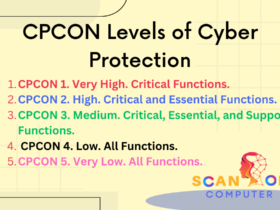


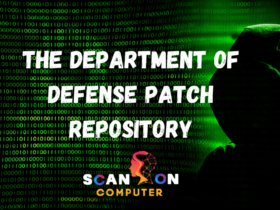

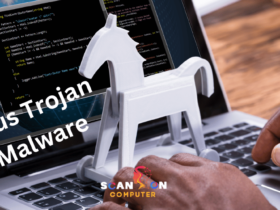
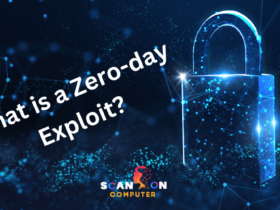
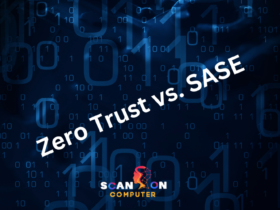
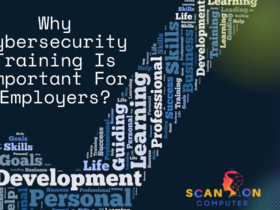
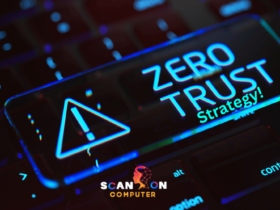
Leave a Reply
View Comments